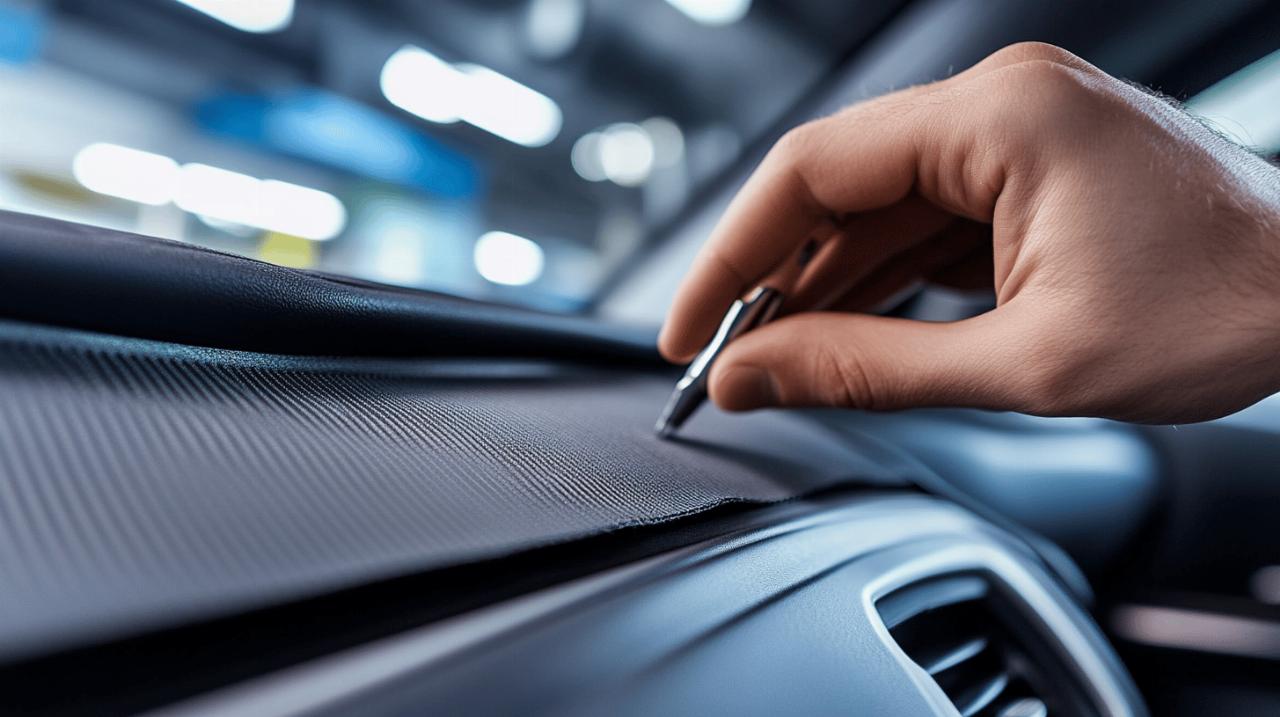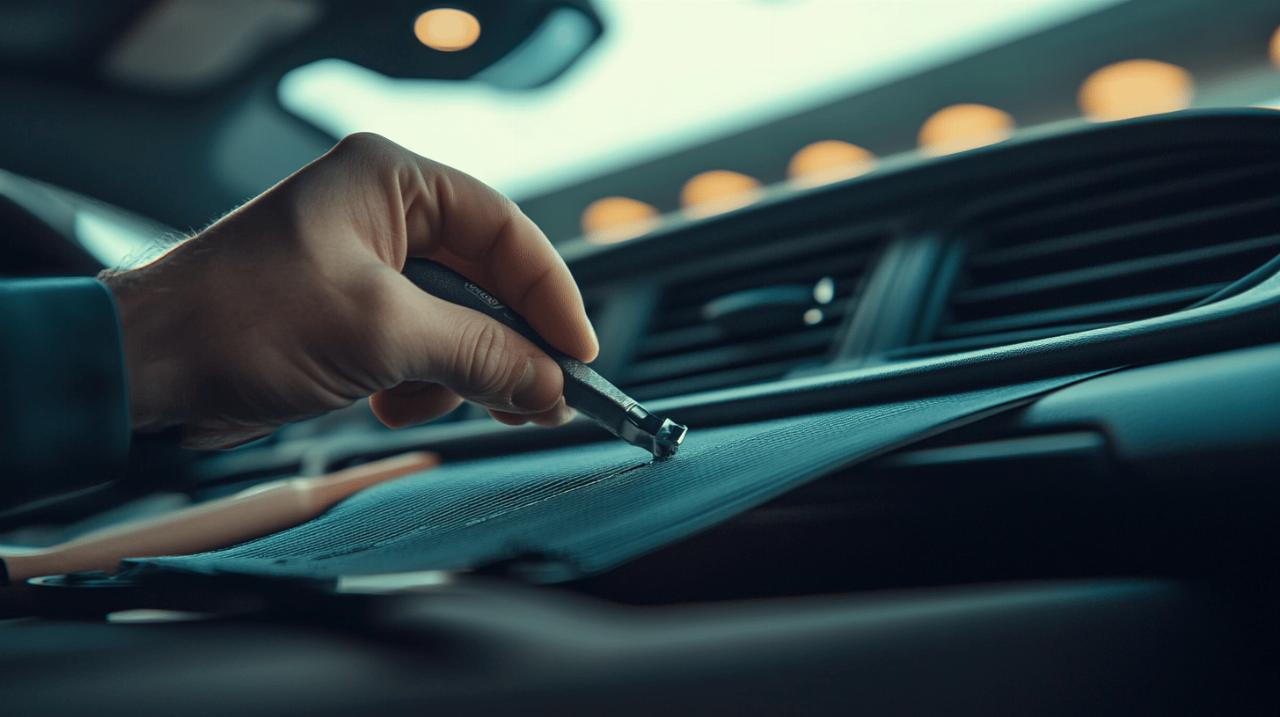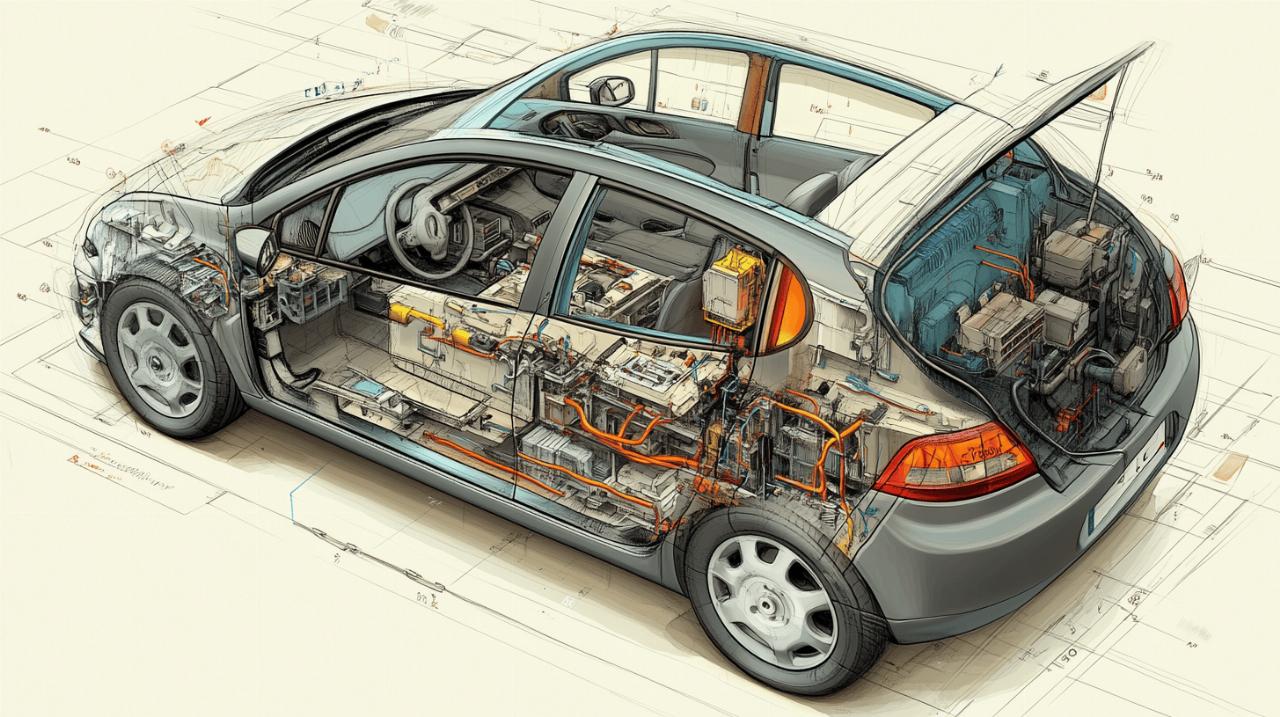Dealing with a sagging car roof lining can be a real nuisance, particularly when the fabric starts drooping down and obstructing your view or simply making your vehicle's interior look rather shabby. Fortunately, there are practical methods to tackle this problem without the considerable expense and effort of removing the entire headliner. With the right materials and a bit of patience, you can achieve a tidy repair that restores your car's interior to a more presentable state, all whilst keeping costs down and avoiding a trip to a professional garage.
Essential Kit and Materials for Repairing Your Car Headliner
Before embarking on any repair work, it is crucial to gather all the necessary materials and tools to ensure a smooth and effective process. The most important item on your list will be a high-quality fabric adhesive spray specifically designed for automotive interiors. This type of adhesive is formulated to withstand the temperature variations and conditions inside a vehicle, ensuring a strong and durable bond. It is worth investing in a reputable brand rather than opting for the cheapest option available, as the quality of the adhesive will directly impact the longevity of your repair. Many suppliers across London stock these products, and you can often find them at automotive accessory shops or larger DIY retailers.
Choosing the Right Fabric Adhesive Spray from London Suppliers
When selecting an adhesive spray, look for products that are explicitly labelled for use on car headliners or upholstery. These adhesives are designed to remain flexible once cured, which is essential given the dynamic nature of a vehicle's interior. Some popular brands available in London include those stocked by major automotive retailers and specialist suppliers who cater to car enthusiasts and professionals alike. Reading reviews and checking ratings can be helpful, as platforms like Airtasker and ClickMechanic often feature taskers and mechanics who rely on specific products for their repair work. A good adhesive spray will provide even coverage and a strong initial tack, allowing you to reposition the fabric if necessary before it sets completely.
Supporting Tools: Rollers, Brushes, and Masking Tape for a Professional Finish
In addition to the adhesive spray, you will need a few supporting tools to achieve a professional finish. A small roller or a soft brush is invaluable for smoothing out the fabric once it has been reattached, helping to eliminate air bubbles and ensuring an even bond across the entire surface. Masking tape is another essential item, as it will be used to hold the fabric in place whilst the adhesive cures, preventing any sagging or movement during the drying process. A clean cloth and a vacuum cleaner with a brush attachment are also recommended for preparing the surface, as removing dust and debris is a critical step in achieving a strong adhesive bond. These tools are readily available from hardware stores and automotive suppliers throughout London, and investing in decent quality items will make the job much easier and more effective.
Preparing the Sagging Headliner: Cleaning and Assessment
Preparation is a key stage in any repair project, and fixing a sagging car roof lining is no exception. Before applying any adhesive, it is essential to thoroughly clean the affected area and assess the extent of the damage. This step ensures that the adhesive will bond properly and that you have a clear understanding of the work required. Skipping this stage can result in a poor repair that may fail prematurely, leaving you back where you started.
Properly Cleaning the Loose Fabric and Exposed Roof Panel
Start by gently pulling back the sagging section of the headliner to expose the roof panel beneath. Using a clean cloth, wipe down both the back of the fabric and the exposed metal or plastic surface of the car roof. It is important to remove any dust, dirt, or grease that may have accumulated over time, as these contaminants can interfere with the adhesive's ability to form a strong bond. For particularly stubborn grime, a mild detergent solution can be used, but be sure to let the surface dry completely before proceeding. A vacuum cleaner with a brush attachment is also highly effective for removing loose particles and ensuring that the area is as clean as possible.
Removing old foam and debris that cause sagging issues
One of the most common causes of a sagging headliner is the deterioration of the foam backing that sits between the fabric and the roof panel. Over time, this foam can break down due to heat, humidity, and age, causing the fabric to lose its support and droop. When preparing the area, take the time to carefully remove any old, crumbling foam or debris that may be clinging to either the fabric or the roof panel. This can be done using the vacuum cleaner and a gentle scraping motion with a blunt tool if necessary. Removing these remnants is crucial, as they can prevent the new adhesive from making proper contact and may cause the repair to fail. Once the area is clean and free of old foam, you are ready to move on to the reattachment process.
Step-by-step method for reattaching your car roof lining
 With the preparation complete, you can now begin the process of reattaching the sagging headliner. This stage requires careful attention to detail and a methodical approach to ensure that the fabric is securely bonded and looks as good as possible. Working in small sections is generally the best approach, as it allows you to maintain control over the process and achieve a more consistent result.
With the preparation complete, you can now begin the process of reattaching the sagging headliner. This stage requires careful attention to detail and a methodical approach to ensure that the fabric is securely bonded and looks as good as possible. Working in small sections is generally the best approach, as it allows you to maintain control over the process and achieve a more consistent result.
Applying Adhesive and Pressing Fabric Back into Position
Begin by gently peeling back a manageable section of the sagging headliner, taking care not to pull too much fabric away at once. Shake the adhesive spray can thoroughly according to the manufacturer's instructions, then apply a generous and even coat of adhesive to both the back of the fabric and the corresponding area on the roof panel. It is important to follow the specific instructions on the spray can, as many adhesives require a few moments to become tacky before the surfaces are pressed together. This waiting period allows the solvents to evaporate slightly, resulting in a stronger bond. Once the adhesive has reached the appropriate level of tackiness, carefully press the fabric back into position, starting from one edge and working your way across to avoid trapping air. Use your hands to smooth the fabric as you go, ensuring that it adheres evenly to the roof panel.
Using Masking Tape to Secure Repairs Whilst the Adhesive Sets
After pressing the fabric into place, it is essential to use masking tape to hold the repaired section securely whilst the adhesive cures. Apply strips of masking tape across the freshly reattached area, spacing them evenly to provide consistent support. The tape prevents the fabric from sagging or shifting during the drying process, which can take several hours or even overnight depending on the adhesive used and the ambient temperature. It is crucial not to rush this step, as removing the tape too early can compromise the repair. Some DIY enthusiasts in London have found that using a small roller or soft brush to press the fabric firmly against the roof panel before applying the tape can help to eliminate any remaining air bubbles and improve the overall finish. Once the adhesive has fully cured, the masking tape can be carefully removed, revealing a neat and secure repair.
Finishing Touches and Maintenance Tips for a Lasting Repair
Once the adhesive has set and the masking tape has been removed, there are a few finishing touches and maintenance considerations to bear in mind to ensure that your repair lasts as long as possible. Taking the time to complete these final steps properly can make a significant difference in the overall quality and durability of your work.
Safely Removing Masking Tape and Dealing with Stubborn Adhesive
When the adhesive has fully cured, carefully peel away the masking tape, starting from one end and pulling gently to avoid disturbing the newly bonded fabric. If you encounter any stubborn tape that seems reluctant to come away cleanly, a hairdryer set to a low heat setting can be used to soften the adhesive on the tape, making it easier to remove without leaving residue or damaging the fabric. Be cautious with the heat, as excessive temperatures can potentially damage the headliner material or the adhesive bond. If any adhesive residue remains on the fabric after removing the tape, it can often be gently rubbed away with a clean cloth or a mild solvent designed for use on automotive interiors, though it is best to test any cleaning product on an inconspicuous area first.
Working through multiple sections and ensuring quality results
If your car roof lining has multiple sagging areas, it is advisable to work through them one section at a time, rather than attempting to tackle the entire headliner in one go. This methodical approach allows you to maintain control over the process and ensures that each section receives the attention it needs for a quality repair. Services like Airtasker, which operates in London and connects users with skilled taskers who can assist with various tasks including car roof lining repair, have seen recent tasks ranging from thirty-five to four hundred pounds, reflecting the variability in complexity and extent of repairs. However, by taking on the work yourself and sourcing materials from local suppliers, you can often achieve a satisfactory result at a fraction of the cost. Regular maintenance, such as avoiding excessive heat exposure and keeping the interior clean, can also help to prolong the life of your repair and prevent future sagging issues. With patience and the right approach, your car's interior can look significantly improved without the need for professional intervention or costly replacement of the entire headliner.





